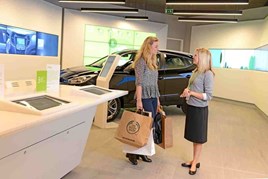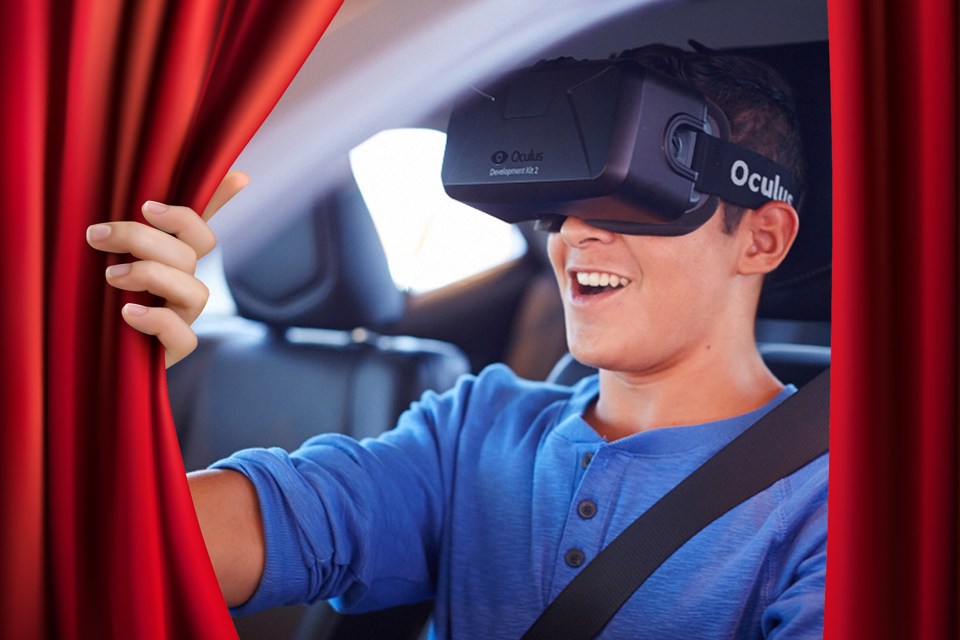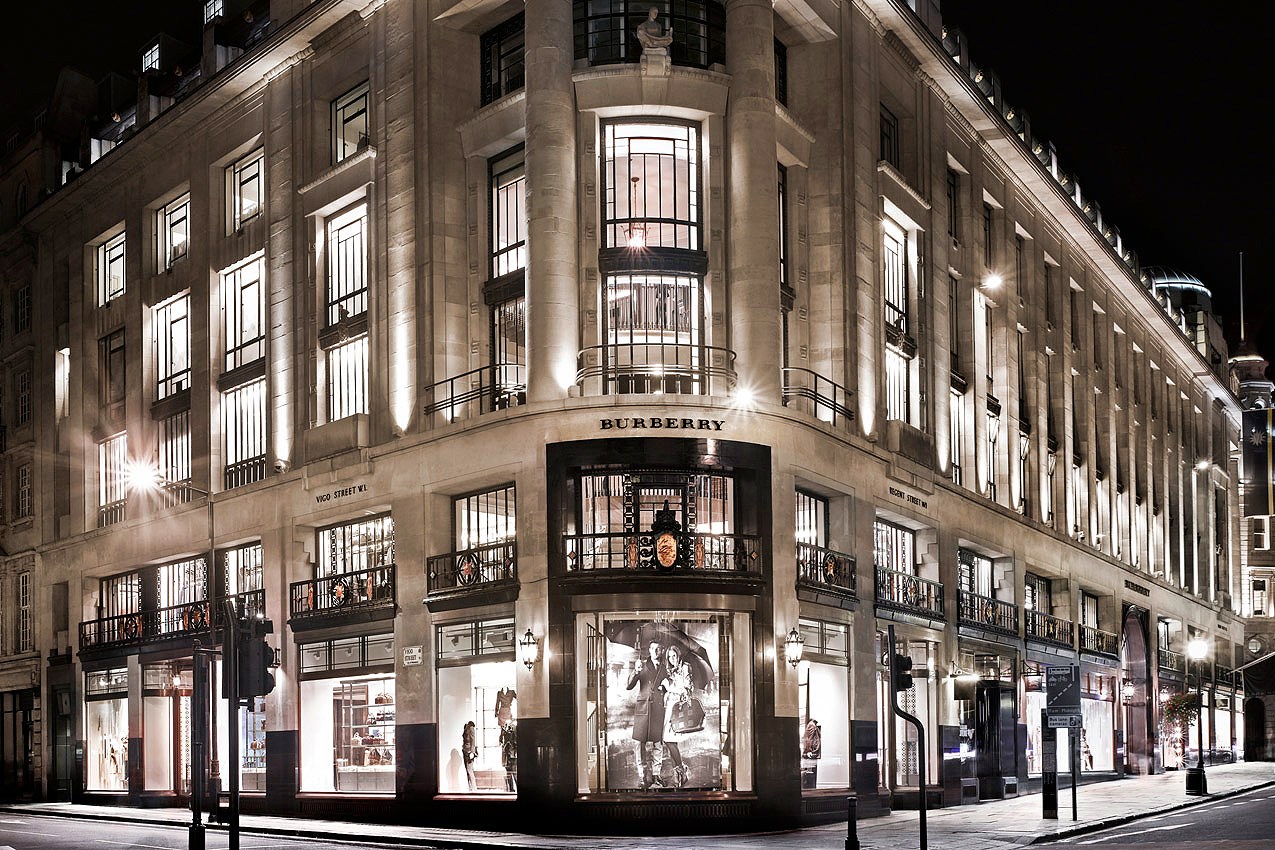The lights dim, the speakers boom and you’re transported to another world. There’s a sense of occasion associated with the cinema that has kept theatres in business. Even with the advent of home cinemas, surround sound and 4K televisions, it’s still special to actually go to an Imax.
As customers spend more and more time away from the showroom during the car-buying process, it means dealers need to impress those that do decide to visit with a sense of occasion.
The latest dealership designs are using technology to engage digitally literate consumers and help to make sense of the physical showroom experience.
Technology and touchscreens are ubiquitous. Over half of the UK’s population own a tablet and over half of UK smartphone users use their devices to check prices in store.
Many dealerships across the UK have already adopted deskless showroom environments, with staff no longer glued to a desktop PC. Free Wi-Fi in the dealership is also commonplace, but how is the industry blurring the digital and physical sales process beyond that?
Barry Cooper, Cooper Solutions managing director, said: “Before signing on the dotted line, most buyers will want to experience the car and take it out on a test drive. Because of that, we’re seeing a lot of the dealerships we work with really make an effort to ensure that their showrooms are less clinical and more welcoming to customers.
“Looking ahead, I’d say we will see further convergence between the traditional showroom and online buying habits. It’s imperative that dealer principals looking to compete ensure they have the best of both worlds: a full suite of software to help streamline the sale, as well as a warm welcome.”
Virtual reality
Mazda used virtual reality (VR) headsets from Facebook-owned Oculus Rift to inject some theatre into its Mazda2 launch ahead of the March plate change this year. The Japanese brand toured 119 dealerships for five weeks before the launch of the new supermini. The company sent a team to dealerships with the headsets and a powerful laptop to run the software and held preview events for the new car.
The headset lets customers sit inside a virtual car and look at any interior styling trim combination. Mazda only had two pre-production cars, so having VR essentially augmented the sales team’s ability to show off the entire Mazda2 range without the physical stocking costs for a larger range of demos.
While some may be sceptical of VR’s usefulness as a sales tool beyond the initial novelty, Claire Andrews, Mazda UK marketing director, said the return-on-investment statistics were impressive.
“95% of total launch orders were based off customers trying the Oculus Rift headset for Mazda2 and this was at a much higher level than expected,” she said.
“We increased our launch orders three-fold and achieved 70% of our March sales target through VR.”
“It’s so useful to help secure orders and retail cars when the cars aren’t available physically in the showroom.”
It was so successful that Mazda used the same strategy for the new CX-3 and MX-5.
Mazda now has 10 headsets in total. A retail version of the Oculus Rift isn’t available to buy until Q1 2016, but development kits are on sale at £230 each. Dealers are allowed to borrow the headsets from Mazda for events.
Andrews said: “The interesting thing is that all age demographics engaged with it, it wasn’t just the younger generation.
“It supports the sales process as a real talking point. When you’re going through a launch phase, you might have two demo cars that are available in two paint options and it’s just not enough.”
Andrews acknowledged that dealers were sceptical at first, but after a demonstration the entire network signed up to the preview event. She said: “94% of the dealers that used it rated VR as excellent and 89% said they would use the technology again for future launch products.”
Preston-based supercar specialist Amari has also invested in headsets, but these are worn by sales people to stream a first-person view of stock to customers over the internet. The GoInStore technology can work through an Android smartphone or wearable smart glasses.
The dealership wanted to find a way to buck the trend of fewer dealership visits per purchase and to allow customers who may be far away from the showroom to view its stock of used Ferraris, Aston Martins, Porsches and Lamborghinis.
Ali Keyhani, Amari sales and head of operations was able to sell a BMW i8 for £100,000 to a customer based more than 200 miles away with his first video stream to a customer.
Sheikh Amari, Amari chief executive, said: “Our sales team know every single detail of these cars, even to the level of knowing the tyre pressures.
“This knowledge is difficult to bring across online and we have been looking for ways to bring our expertise into the online environment.”
Footfall
Dealers are also using new technology to more accurately track footfall and the behaviour of consumers while they are in the showroom.
GForces’ Net Director Footfall technology uses a showroom’s Wi-Fi connection to pick up any enabled device that enters its radius, allowing dealers to accurately track how many people are actually walking around the showroom.
The next stage is to take it further, capturing customer details in return for access to the free Wi-Fi.
The customer’s details are passed on to the dealership to help identify individuals that are in the showroom and cross-reference the information with the dealership’s own dealer
management system (DMS), all automatically.
Tim Smith, GForces group strategy director, said: “Using this information in the showroom can help dealers gain a quick understanding of all previous interactions at the dealership.
“So far around 10% of showroom visitors are registering to use guest Wi-Fi.”
The application is still in its early stages of development, but Essex-based Tony Le Voi Vauxhall is already trialling the technology.
Simon Dayes, group sales operations director, said: “This is a very exciting trial to be involved with as we think it represents the first stages of true integration between a customer’s online interactions and what they do when visiting a showroom.
“There is a ready opportunity to create a ‘virtual meet and greet’ which benefits both the customer and us as a business, while the data we gather will be vital in terms of optimising processes.”
Dayes can use the technology to track the sales journey the customer has taken online, whether that’s getting vehicle valuation or a finance quote and having that specific information to hand to personalise the sales experience as soon as customers enter the showroom and connect to the free Wi-Fi.
Rockar
 Hyundai’s ultimate interpretation of a digitally enhanced automotive retail showroom is equipped with digital screens and merges its website experience with the physical.
Hyundai’s ultimate interpretation of a digitally enhanced automotive retail showroom is equipped with digital screens and merges its website experience with the physical.
The Korean brand’s first Rockar digital showroom opened at Bluewater in Essex 12 months ago.
The business is on track to sell 1,000 units in its first 12 months and has already conducted more than 500 test drives. The sales success is double that of the average traditional UK Hyundai dealership.
Roughly 50% of purchases have been made online, in many cases after visiting the store.
More than half of buyers are female and the average age of a Rockar customer is 37 years old. The industry average is 55.
While Hyundai wouldn’t say whether the showroom is in profit after a year, it has strongly hinted it would be expanding with another showroom in London.
The business also became the first car retailer to win Digital Store of the Year at Retail Week’s Tech and Ecomm Awards this year.
Simon Dixon, chief executive and founder of Rockar, said: “Rockar is challenging every preconception about how buying and selling a car should be.
“When looking at the success of Rockar so far, it is clear that challenging the historical approach to car buying is the way forward.”
Like BMW’s product geniuses, Rockar has “angels” who are not commissioned on sales, but are there to advise and help customers.
The dealership features digital configuration screens and customers can choose to complete the entire purchase process online or in store. The buying process, Rockar says, can be completed in less than five minutes. There is “no dealing or haggling”.
Customers can save their model configurations and walk away to complete the sales process online if they wish.
Rockar flips the traditional retail model, giving customers the power to part-exchange their car, choose a finance option, order a new vehicle and track its delivery, all without speaking to a sales person, if that’s the way they want to do it.
The fact the showroom is in a shopping mall means customers can get their car serviced while they shop. Test drives can be arranged online for specific slots and the showroom is open until 9pm.
On a typical weekday, Rockar can expect between 400 and 500 visitors. This rises to between 900 and 1,100 at weekends. Traditional dealers, Rockar says, can expect to see 750 new car customer visits per year.
Dixon has a 10-year contract and lease of 10 years at the site, which is a testament to Hyundai’s commitment to the concept. Will other manufacturers now follow suit to merge the digital and the physical showroom?
Taking a Virtual reality road test
‘It’s all just a gimmick isn’t it?’ The reaction to virtual reality (VR) is a common one.
The real problem with VR is that until you have tried the most recent version of the technology, it’s difficult to describe how realistic it actually is.
While Lexus has yet to introduce Oculus Rift sets in its UK dealerships, it did use them for press launch activity on its new NX crossover vehicle.
Putting on the headset totally covers your visual and auditory senses. You’re completely cut off from the outside world and transported into a digital space.
After some fiddly calibration using eye- and head-tracking movements, you get transported into the driving seat of the new NX.
Sitting down in a virtual car feels eerily realistic. All the details of the dash and trim are there.
Even turning your head to look in the rear of the cabin feels like you’re really there, with the view obstructed by your head-rest.
The sense of inertia when the car starts up and pulls away is embarrassing – your mind is fooled to the point of feeling gravity. When you try to move your phantom hands to steer the wheel, they don’t move. It is a seriously odd, but exhilarating feeling and after five minutes, I was convinced it could become more than just the gimmick you would expect.
If manufacturers put up the cost of developing the software to make sure customers can view the entire range and all the different options that go with it, it could be a real tool to take configurators to the next level. It may even help reduce demonstrator costs too.
The fact multi-million tech companies like Facebook, Microsoft, Samsung and HTC are all funnelling millions into competing VR products is perhaps an indication of how seriously the technology is being taken.
“We’re seeing a lot of the dealerships we work with really make an effort to ensure their showrooms are less clinical” Barry Cooper, Cooper Solutions
Outside industry case study: Burberry
Fashion brand Burberry is often highlighted by the retail industry as being a leader in merging its online retail experience with its physical stores.Burberry’s Regent Street store in London was created specifically to target “millennial” consumers (those born between the early 1980s and 2000s). The company knew it needed to communicate in a way its target audience understood and that it had to be heavily digitally influenced.
Burberry calls it “the store of the future” and its aim was to make customers feel like they are walking into its website when they come through the shop doors.
Christopher Bailey, Burberry chief creative officer, said: “Everything we do on burberry.com is reflected in the Regent Street space.
“We have this really big online experience and there were things online that ordinarily you would only get on the website, like Burberry Bespoke, where you can custom make your own trench coat. It had always been a digital experience, but you can now customise clothing in the store itself.”
Clothing in the store is embedded with chips, which can be read by screens and mirrors. When a customer walks into a changing room holding a jacket, one of the mirrors can respond by turning into a screen showing images of how it was worn on the catwalk, or details of how it was made and different options to customise and order on the spot.
In the childrenswear room, low-level tables are equipped with iPads loaded with drawing apps to keep young customers happy.
A large central screen broadcasts live catwalk events and acoustic music videos, something that was saved for burberry.com, but is now used in the physical stores too.
Apple, another retailer lauded for its physical showroom experience, was so impressed with how Burberry engaged its customers that it head-hunted the fashion brand’s chief executive Angela Ahrendts.


















Login to comment
Comments
No comments have been made yet.